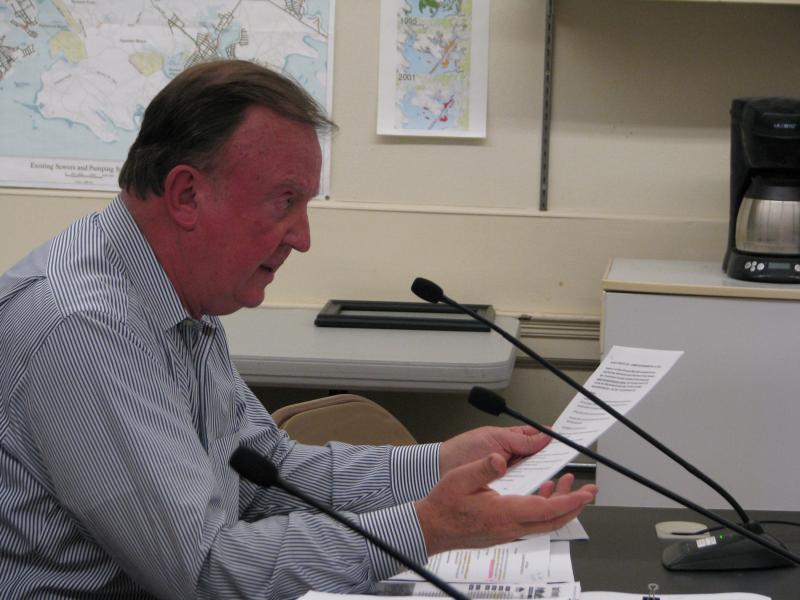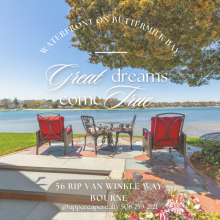Citizen and Planning Board chair square off at hearing on development rights proposal
Previewing a likely debate at Town Meeting, resident Ed Pacewicz and Planning Board Chair George Barrett squared off Monday night at a hearing on a proposed “transferrable development rights” bylaw.
The bylaw, proposed by the Planning Board, would allow landowners in most areas of town to sell their right to develop that land to property owners elsewhere in town who want to develop more intensively than current zoning allows.
In either case, town planning authorities would have to approve both the terms of a "conservation restriction" forever prohibiting development on the first “sending” parcel and the specifics of the more intense development on the “receiving” parcel.
The idea is to preserve open space without requiring the town or a conservation group to spend the money to buy the land or development rights while allowing for controlled, efficient development in areas of town that can support it.
Pacewicz began his remarks by providing each Planning Board member with written, multi-page comments on the bylaw and stating: “I am not opposed to TDR. I am opposed to this TDR.”
His subsequent remarks focused on what he saw as the fundamental flaw of allowing cranberry bogs to continue to operate on land that has been shielded from further development. A long-time clean-water activist, Pacewicz has long been critical of the cranberry industry’s contribution to nitrogen pollution in town water and Buzzards Bay.
“I’m not knocking cranberry bogs or anything else,” Pacewicz said Monday night. But “cranberry bogs have a pollution footprint.”
He went on to detail what he saw as a number of flaws in the proposed bylaw, making reference at one point to a hypothetical 300 units of housing that could be built with the acquisition of development rights. He asked the board: “How will this benefit the health, safety and welfare of the people of Wareham?”
Chairman Barrett replied with a question: “How about the 300 units you just mentioned? Do you want to sit them on top of the watershed?”
Barrett and consulting engineer Charles Rowley pointed out that any large, dense development in a “receiving” area would be on town sewer while the same number of units currently permitted in a more rural area would have septic systems – another culprit in nitrogen pollution.
Pacewicz complained that the bylaw would allow construction of a “35-foot house” with acquired development rights. “I don’t want a 35-foot house beside my home,” the Briarwood Beach resident said.
“You could have a 35-foot home next to yours next month,” Barrett shot back, pointing out that new construction in a flood zone would currently be allowed at 35 feet to elevate the structure above predicted flood levels.
As the back-and-forth continued, Planning Board members acknowledged some of Pacewicz’s points and agreed to make changes in such matters as the specific requirements for stand-alone sewer treatment systems, excluding “infrastructure” from calculations of the development rights available to sell, and deleting a paragraph that repeats the previous paragraph.
Planning Board member John Cronan went further, saying: “The case I just heard the man present is a pretty darn good one.”
However, when it came time for a vote on the recommendation to Town Meeting, Barrett, Michael Baptiste Sr. and Michael Fitzgerald all voted to recommend Town Meeting approval, with only Cronan opposed.














